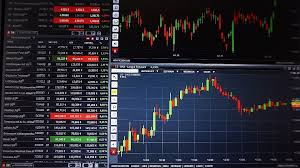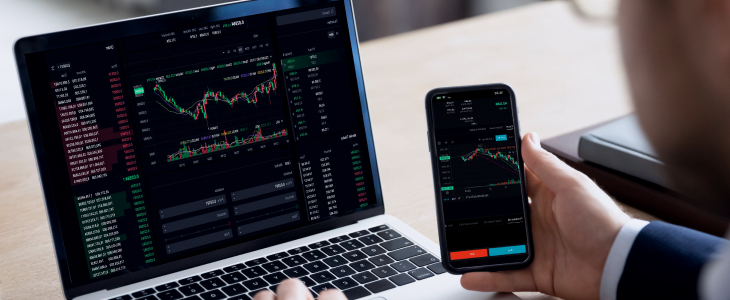The Ultimate Beginner’s Guide to Forex Trading 1640440844

The Ultimate Beginner’s Guide to Forex Trading
Forex trading can be an excellent opportunity for those looking to invest and make profits from currency fluctuations. However, as a beginner, it can also be a daunting prospect. This guide will introduce you to the basics of Forex trading, essential tips, and resources to help you get started. Be sure to check out forex trading beginner guide Trading App APK as a useful tool for your trading journey.
What is Forex Trading?
Forex, or foreign exchange, is the global marketplace for buying and selling currencies. The Forex market operates 24 hours a day, five days a week, allowing traders to intervene in the market at any time. Transactions are made in currency pairs, which means you are always buying one currency while simultaneously selling another. For example, if you believe the Euro will strengthen against the US Dollar, you would buy EUR/USD.
Forex Market Participants
The Forex market consists of a diverse range of participants, including:
- Centrals Banks: They influence exchange rates and control national monetary policy.
- Financial Institutions: Banks and hedge funds engage in Forex trading for speculative purposes or to facilitate international transactions.
- Corporations: Businesses involved in international transactions will trade currencies to hedge against fluctuations in currency rates.
- Retail Traders: Individual traders who participate in the Forex market to make profits from trading currency pairs.
Understanding Currency Pairs
Currency pairs are quoted with regard to their exchange rate, representing the value of one currency against another. There are three main types of currency pairs:
- Major Pairs: These include the most traded currencies, such as EUR/USD, USD/JPY, and GBP/USD.
- Minor Pairs: These are less traded pairs, like EUR/GBP or AUD/NZD.
- Exotic Pairs: These include a major currency paired with a currency from a developing economy, like USD/TRY (Turkish Lira).
Key Concepts in Forex Trading
Before engaging in Forex trading, it’s essential to understand some key concepts:
1. Leverage
Leverage allows traders to control a larger position with a smaller amount of capital. For example, if your broker offers 100:1 leverage, you can control $10,000 with just $100. While leverage amplifies potential profits, it also increases the risk of significant losses.
2. Lots

Forex trades are executed in units called “lots”. A standard lot is 100,000 units of currency, but there are also mini lots (10,000) and micro lots (1,000) which are suitable for smaller investments.
3. Pips
A pip is the smallest price movement in the Forex market usually equivalent to a one-digit movement in the fourth decimal place (0.0001), except for currency pairs involving the Japanese Yen where it is the second decimal place (0.01).
How to Get Started with Forex Trading
Here’s a step-by-step process to begin your Forex trading adventure:
1. Educate Yourself
Start by learning the different aspects of Forex trading through educational resources, such as books, online courses, and webinars. Understanding key concepts, trading strategies, and risk management is crucial.
2. Choose a Reliable Forex Broker
Select a broker that is regulated and offers a trading platform that fits your needs. Look for brokers that provide good customer support, competitive spreads, and a user-friendly interface.
3. Open a Demo Account
Before trading with real money, open a demo account to practice your trading strategies. Most brokers offer a demo account that simulates the trading experience with virtual money, allowing you to develop your skills without financial risk.
4. Develop a Trading Plan
A well-structured trading plan outlines your trading goals, risk tolerance, strategies, and criteria for entering and exiting trades. Stick to your plan and adjust it as you gain experience.
5. Start Trading with Real Money

Once you feel confident in your trading abilities, consider trading with real money. Start with a small amount to manage your risks effectively, and gradually increase your investments as you gain more experience.
Effective Forex Trading Strategies
To be successful in Forex trading, consider implementing the following strategies:
1. Trend Following
This strategy involves identifying and trading in the direction of the trend. Use technical indicators like moving averages to confirm the trend direction before entering a trade.
2. Range Trading
Range trading is based on the idea that prices often move within a specific range. Traders can buy at support levels and sell at resistance levels, profiting from price fluctuations.
3. Breakout Strategy
Breakouts occur when the price moves outside a defined level of support or resistance. Traders enter a position when they anticipate a significant price movement following the breakout.
Risk Management in Forex Trading
Effective risk management is essential for long-term success. Some strategies include:
- Use Stop-Loss Orders: These orders automatically close a position at a specified price to prevent losses.
- Set a Risk-to-Reward Ratio: Aim for a risk-to-reward ratio of at least 1:2, meaning you stand to gain twice as much as you risk on a trade.
- Diversify Your Trades: Avoid putting all your capital into one trade. Spread your investments across different currency pairs to mitigate risks.
The Importance of a Trading Journal
Keeping a trading journal helps you analyze your trades, understand your strengths, weaknesses, and adjust your strategies. Documenting your thought process before and after trades can provide valuable insights that contribute to your growth as a trader.
Conclusion
Forex trading can be an exciting and potentially lucrative investment opportunity for beginners willing to learn and adapt. By understanding the basics, educating yourself, and developing a solid trading plan, you can navigate the Forex market effectively. Remember to practice good risk management and stay patient as you hone your trading skills. With time and experience, you can become a proficient Forex trader and build your path to financial success.

Deixe uma resposta
Want to join the discussion?Feel free to contribute!